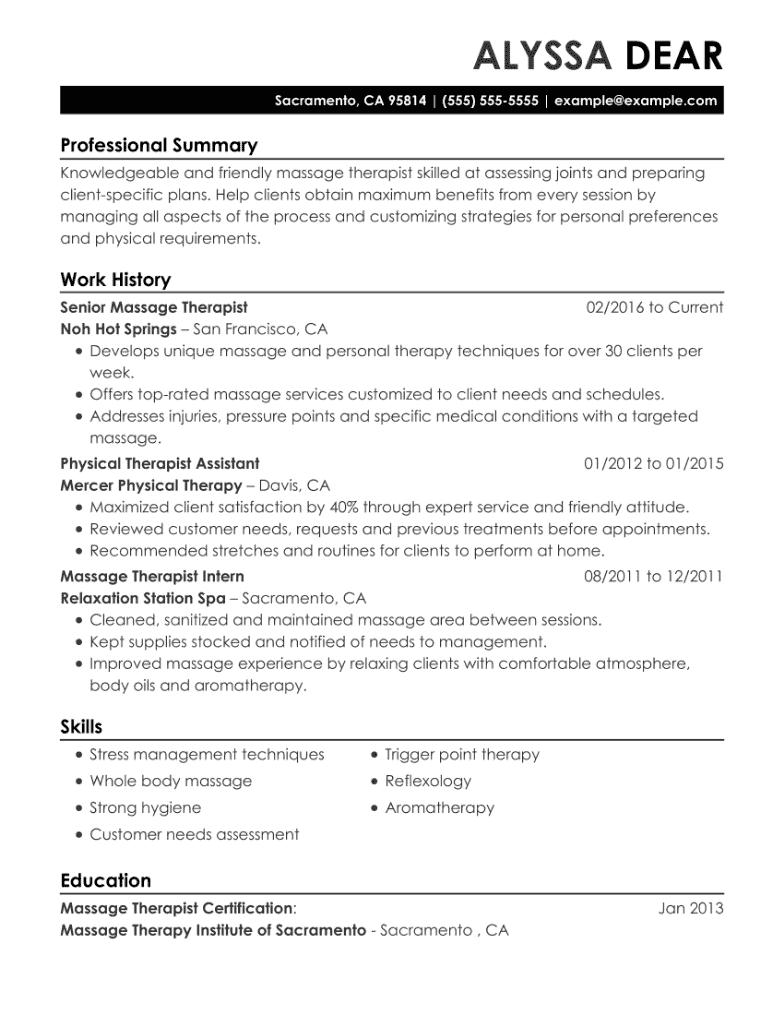Chronological Resume Writing Tips & Examples
A chronological Resume helps put your work experience front and center. Follow our tips to write the best chronological resume to catch the attention of hiring managers, recruiters and employers.
Our customers have been hired by*:*Foot Note

Chronological resume
Your resume is the first thing a hiring manager sees about you, which means you need to make sure it’s perfect. That starts with making sure your resume format is correct.
When you’re crafting a resume, there are three main formats you can use: chronological, functional and combination. A chronological resume is the most common type of resume and if you’re a typical job seeker looking for a job that’s similar to jobs you’ve had years of experience with, it will be the best option for you.
Read on to learn how you can craft an effective chronological resume.
When to use a chronological resume
A chronological Resume is typically the most common resume format and you’ll want to use it unless you have a good reason not to. Here are a few reasons you’ll likely use a chronological resume:
- Your work history is full of jobs that are similar to the job you’re pursuing
- You have a few jobs under your belt already
- Your skills are fairly typical of those in your field
- You’ve been out of school for a bit of time
- You don’t have any large employment gaps
In general, as long as there’s not a compelling reason for you to use the functional or combination resume, a chronological resume will work just fine.
What is a chronological resume?
A chronological resume, also called a reverse-chronological resume, is a resume format that emphasizes your work history. This resume lists your work history in reverse-chronological order, starting with your most recent job and working your way back to earlier jobs. This type of resume draws a recruiter’s attention to your work experience, highlighting your proficiency in past jobs.
Build my resumeChronological resume vs. functional and combination resumes
Functional and combination resumes are slightly different from chronological resumes in what they emphasize and understanding the difference is important if you want to choose the right Resume format.
A functional resume emphasizes skills, with expanded certifications and skills sections. An extremely strict functional resume may also keep your employment history very brief. This type of resume is meant for people whose previous jobs won’t help them in their job searches. This may include people going through a career change, candidates with unexplained work history gaps or people who have just graduated.
A combination resume emphasizes skills while also expanding on past employment. Typically, in a combination resume, the work experience section will include an explanation of how each job built applicable skills. For example, if you’re currently in software engineering and you’re moving into high school teaching, you might emphasize how your computer knowledge will allow you to create lesson plans and communicate with students and teachers more easily.
Different resume options will work best for different job seekers. A chronological resume is best for individuals who know their work history applies to the job they’re applying for.
Chronological resume format: key writing tips
The chronological resume format is fairly simple and easy to read, which is why recruiters see it so often. That doesn’t mean the content should be overlooked. Below are some tips on how to effectively structure your chronological resume.
Header
First up is the header. This is where you put your most recent contact information. List your name, address and phone number. You may also want to list professional social media accounts like LinkedIn. A resume builder will typically help you create a great look for your header, making your name a little larger so it’s easy to see at a glance.
Summary
The next section is your resume summary. This is a three to five-sentence paragraph that sums up your key qualifications and gives a hiring manager an idea of who you are. The summary statement should be setting the tone for your resume by showing your relevant skills and professional experience, all in a single paragraph.
Skills
Even though a chronological resume will focus heavily on your work history, you still need a skills section to indicate what you’re most accomplished at. In the skills section of a chronological resume, make sure you list skills that naturally flow from the previous jobs you’ve had, typically as bullet points. For example, as a customer service representative, you may note these skills:
- Handling demanding customers
- Working with a team
- Efficiency at taking calls
- Knowledge of computer-based calling services
Work experience
Since your work experience is what you want to focus on in a chronological resume, it will go at the top of the resume. In chronological resume templates, you will notice that the work experience goes above the skills section. Underneath each job, make sure you also indicate the most important things you did and any awards you earned. As a customer service representative, you might write the following as part of your work history:
Ford Customer Service – Dec 2017 to Jan 2020
-
- Took over 50 calls every day from customers to resolve their doubts and answer queries.
- Ranked in the top five callers in the district.
- Helped develop a new onboarding process that reduced turnover by 12%.
Education
The last section of your resume should be the education section. In this section, you’ll list your college education and any special certifications that you’ve received that are relevant to your career. Avoid listing your high school education unless you have no college education. If you’ve gone through college, potential future employers don’t need to know about your high school credentials.
Build my resumeChronological resume examples
FAQ: Chronological Resumes
Have questions? We’re here to help.
What job seekers should use chronological resumes?
Most job seekers are using chronological resumes even if it may not be the best fit as this format type is typically seen as the default. However you may have different styles and information present in your document as your Resume will change and evolve over time and the length of your career.
Is there anything I shouldn’t include in my Resume?
There are a few important things you’ll likely want to avoid in your Resume in today’s job field. Here are a few things not to put in your chronological resume:
-
Your high school information or your GPA
In general, avoid putting your high school information in your education section unless you have no other education experience. And for both high school and college listings, there’s no need to indicate your GPA but you should include any honors you’ve received, such as magna cum laude.
-
Basic computer proficiency
In today’s world, employers assume you have basic computer proficiency. You’re wasting space and looking out of touch by listing it as a skill.
-
Proficiency with apps you don’t know well
Everyone knows the trick of listing knowledge of specific software on your resume to try and pad it out, but it usually doesn’t work. So unless you actually have extensive proficiency with software such as Microsoft Excel, don’t add them to your resume.
-
Entry-level jobs unrelated to your career path
If you’re looking to get a job as a professor, there’s no need to put a food service job from 2011 on your resume. It has nothing to do with your current career.
Should I try a different Resume if the chronological resume doesn’t seem to be working for me?
The reason there are different Resume formats is that different types will work best for different job seekers. If you feel like the chronological resume format isn’t working well for your needs, feel free to try out different formats with our easy-to-use resume builder.
Remember that your work history section should be fairly extensive to best utilize the benefits of a chronological resume. If you don’t have a lot of work history, you might want to shift to a different format. A resume builder can be incredibly helpful here because you can simply enter your information and see which format works best for you.
What is the difference between a functional Resume and a chronological resume?
The chronological Resume is a better fit for those with an outstanding work history and line of career progression while the functional resume is skills based. The functional resume is great for showcasing different skills you may possess inside or outside of the workplace and serves as a nonlinear way of presenting your career history which may soften imperfections in your work experience timeline. If your work history follows a more linear pattern and you have great career progression then the chronological resume is probably the best choice for you.
Couldn't find the answer you're looking for?






